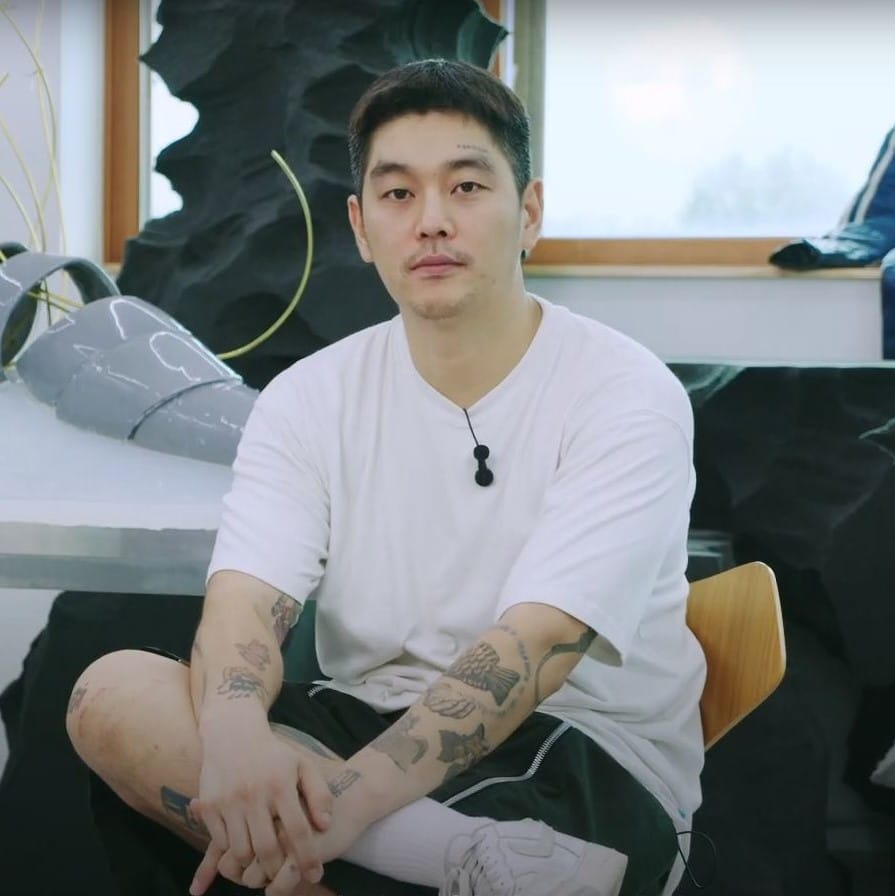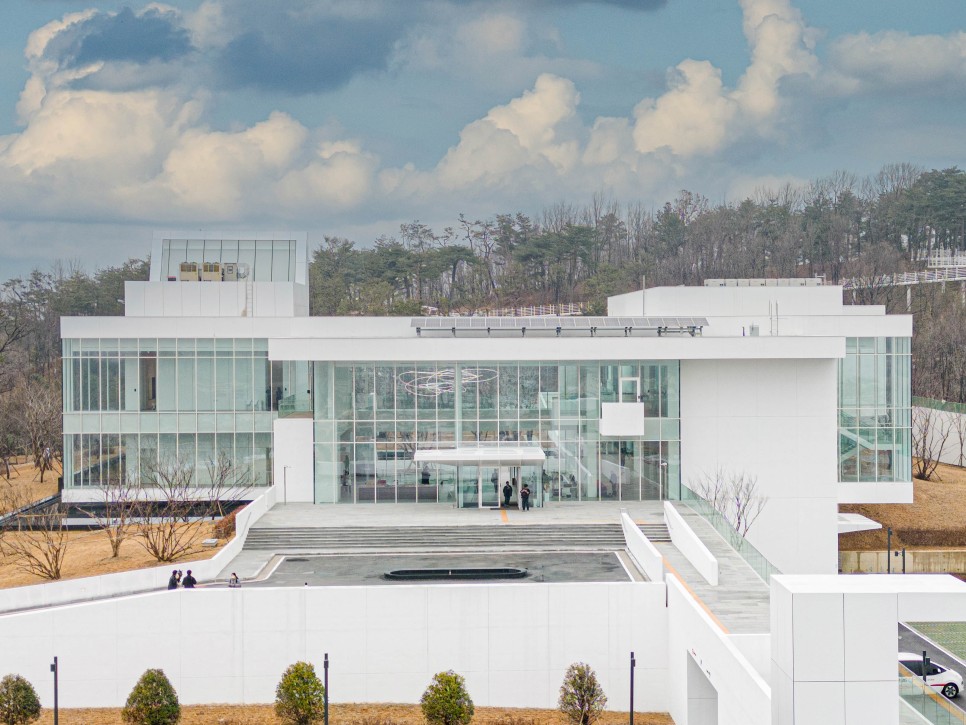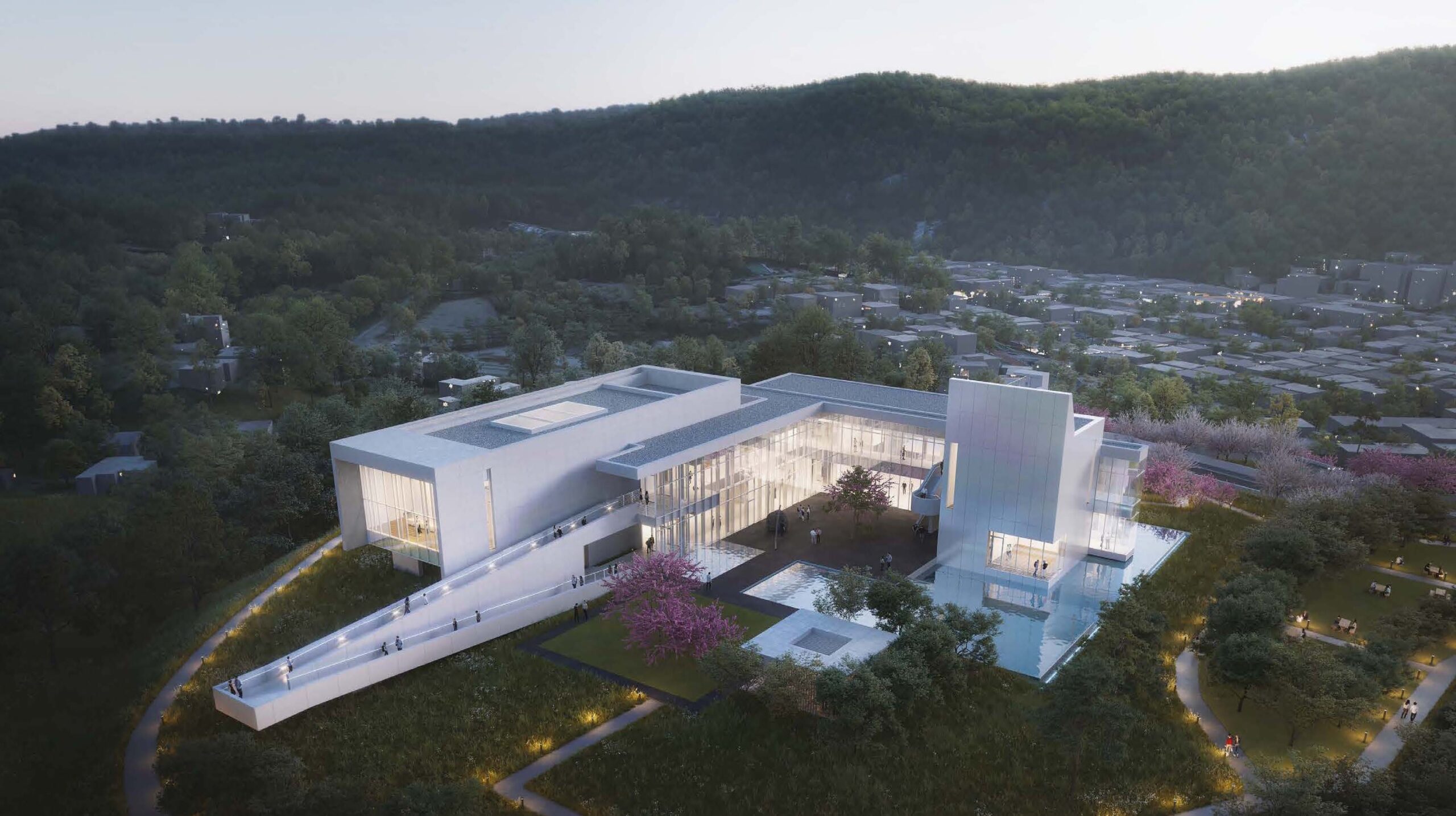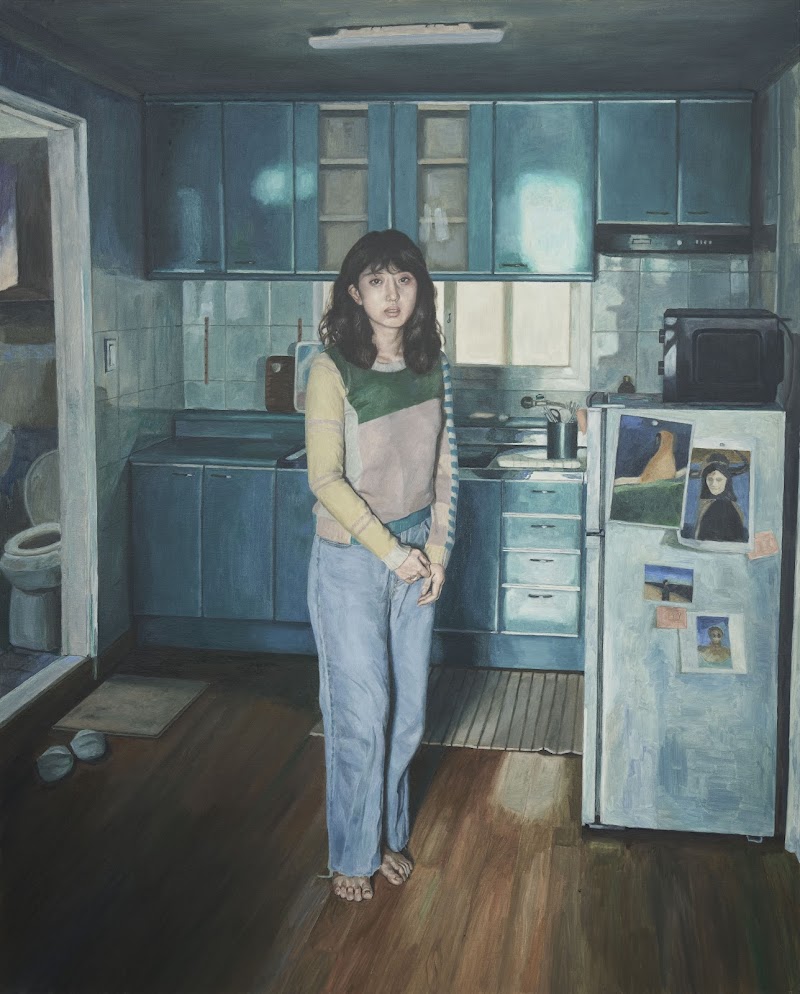
Lucio Fontana, Spatial Environment with Neon Light (Ambiente spaziale con neon), 1967/2024, Installation view at Hauser & Wirth, Los Angeles Ph. Fredrik Nilsen ©Fondazione Lucio Fontana, Milan by SIAE 2024
Sorol Art Museum presents its inaugural exhibitions, “Lucio Fontana: Spatial Concept” and “In Dialog: Quac Insik”, on view through April 14.
“Lucio Fontana: Spatial Concept”, on view in gallery 1 and 2, focuses on Fontana’s Spatialist art that unfolded after the proclamation of the manifestos. The artist attempted to encapsulate form, color, and the sculptural aspects of sound in space, seeking to extend the artwork into the fourth dimension by incorporating the viewer’s movements. As a result, Spatial Environments (Ambienti Spaziale) series was created in 1949, expanding the concept of space using light. Fontana, aiming to overcome the limitations of the flatness inherent in traditional painting, advanced his Spatial Concept (Concetto spaziale) by creating holes in the canvas with the Holes (Buchi) series, and slashing the canvas with a cutter in the Slashes (Tagli) series, drawing the physical space of reality into the aesthetic realm of his works.
In this exhibition, six Spatial Environments are installed, for which the original settings of each artwork from the 1940s to the 1960s have been faithfully reproduced. Visitors are invited to enter Fontana’s expanded environments, transcending materiality and immersing themselves in light and space, becoming a part of the artwork.
 “In Dialog: Quac Insik” Installation view ©Sorol Art Museum
“In Dialog: Quac Insik” Installation view ©Sorol Art Museum“In Dialog: Quac Insik”, on view in gallery 3, is the first exhibition of ‘In Dialog’ project to illuminate the art historical context of Korean art and global art which reveals the museum’s identity. With this exhibition, an intriguing aesthetic dialog is anticipated to take place between Lucio Fontana and Quac Insik, who shared the era but had different regional, cultural, and historical backgrounds.
Born in Korea in 1919, Quac moved to Japan in the 1930s to study art, experiencing various trends in Western contemporary art. In the mid-1950s, he actively explored major movements in Western art, such as Surrealism, Art Informel, and Fontana’s Spatialism, while simultaneously conducting diverse experiments to find his unique artistic language. In the early 1960s, focusing on the Matterism, Quac distorted the surface of his works and created art using everyday materials such as stones, glass, and steel.
While there was no direct exchange between Fontana and Quac, some of Quac’s works reflect Spatialist influences and aesthetic parallels seen in Fontana’s Spatialism. If Fontana slashed the canvas to introduce a four-dimensional spacetime into his art, Quac Insik, who was engrossed in exploring materiality, opted to shatter glass plates with iron balls or tear and reassemble metal plates. The similarities in their performative and methodological approaches offer ample grounds for comparison. Nevertheless, the artistic paths of these two diverge, heading in different directions regarding the themes of tradition and materiality. Fontana surpassed the physically confined limits of art, expanding his art through space, light, and the experience itself. In contrast, Quac Insik, as expressed in his statement “listening to the words of objects,” engaged in performative acts on the materials themselves, delving deeply into the essence of materials with his distinct and personal sensibility.



























